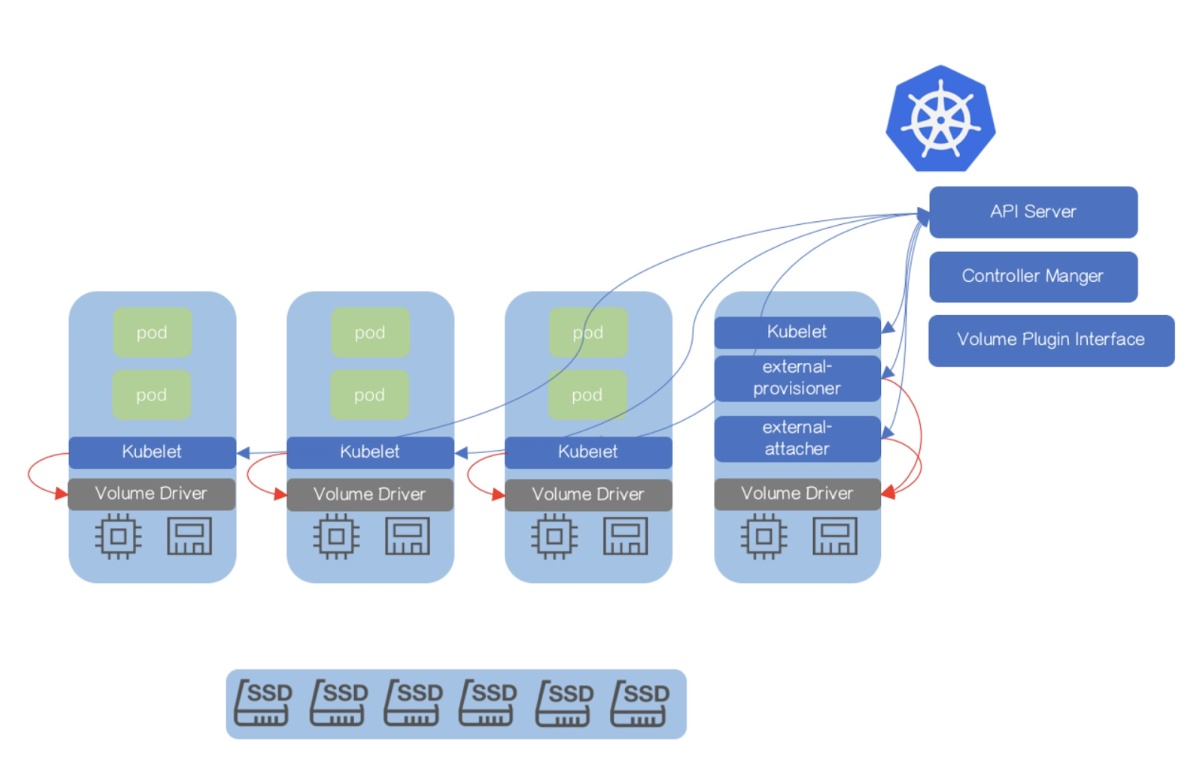Pavel Rykov
August 7, 2023 ・ Kubernetes
Kubernetes CSI - Leveraging standards
Kubernetes has undeniably transformed how applications are built, deployed, and managed in distributed systems. However, even with its cutting-edge approach, Kubernetes still encounters a pressing issue: incorporating various storage systems seamlessly. Enter Kubernetes Container Storage Interface (CSI), designed to standardize the integration of different storage systems. Here, we will explore how Kubernetes CSI, with specific reference to Longhorn CSI and AWS CSI, can be leveraged to simplify deployments.
The Kubernetes Container Storage Interface (CSI)
At its core, Kubernetes simplifies the complex task of managing distributed systems. Yet, handling storage in this setup remains a challenge. This is where CSI comes into play. It's a standard that allows containerized workloads on Kubernetes to interface with various storage systems. By providing an interface for Kubernetes to interact with multiple storage backends, the CSI promotes standardization and interoperability.

Source: https://kubernetes.io/blog/2018/08/02/dynamically-expand-volume-with-csi-and-kubernetes/ (Documentation Distributed under CC BY 4.0)
Vendor Agnostic Storage Integration: Before CSI's introduction, storage vendors had to invest significant resources in developing plugins specific to Kubernetes. This not only led to a fragmented ecosystem but also incurred substantial development and maintenance overhead. With the introduction of CSI, this changed. For instance, we started using Longhorn, an open-source project by Rancher. The Longhorn CSI plugin made it easy to integrate Longhorn's distributed block storage system into our Kubernetes environment, simplifying our deployments and reducing the time spent on storage management.
Automated Volume Lifecycle Management: Kubernetes CSI also simplifies the deployment process by automating volume lifecycle management. For instance, in our AWS environment, the AWS EBS CSI driver automatically provisions and deprovisions EBS volumes when we create and delete PersistentVolumeClaims. This automated volume lifecycle management has been a significant advantage in our deployment process, eliminating manual work, reducing errors, and leading to smoother deployments.
Increased Flexibility and Scalability: One of the great benefits of using the CSI driver is the flexibility it provides. For example, we've been able to use the Longhorn storage system across different container orchestration platforms due to CSI's orchestrator-agnostic nature. On top of that, when our data storage needs spiked, we could seamlessly scale up our resources with the AWS EBS CSI driver, just as easily scaling down when demand dropped. This capability has vastly simplified our deployments as we can modify our setup to meet changing needs without revamping our entire infrastructure.
Improved Security: Security is a crucial concern in any deployment process. With CSI, we've observed a notable enhancement in our security posture. For instance, the AWS EBS CSI driver uses IAM roles for service accounts, allowing fine-grained access control to AWS resources. By ensuring sensitive data is encrypted and secure, it has lessened our worries about deploying applications and helped us reduce the need for custom security solutions for each deployment.
Conclusion
In our journey with Kubernetes, CSI has been a crucial technology. It has transformed and simplified our deployment process by providing a standardized interface for different storage systems. By using Longhorn, CEPH, and AWS EBS CSI drivers, we have experienced firsthand the advantages of vendor-agnostic integration, automated volume lifecycle management, enhanced scalability, and improved security. Thus, for any organization that's invested in Kubernetes, understanding and leveraging CSI is a powerful way to streamline deployments and achieve operational efficiency.
- Kubernetes
- Value